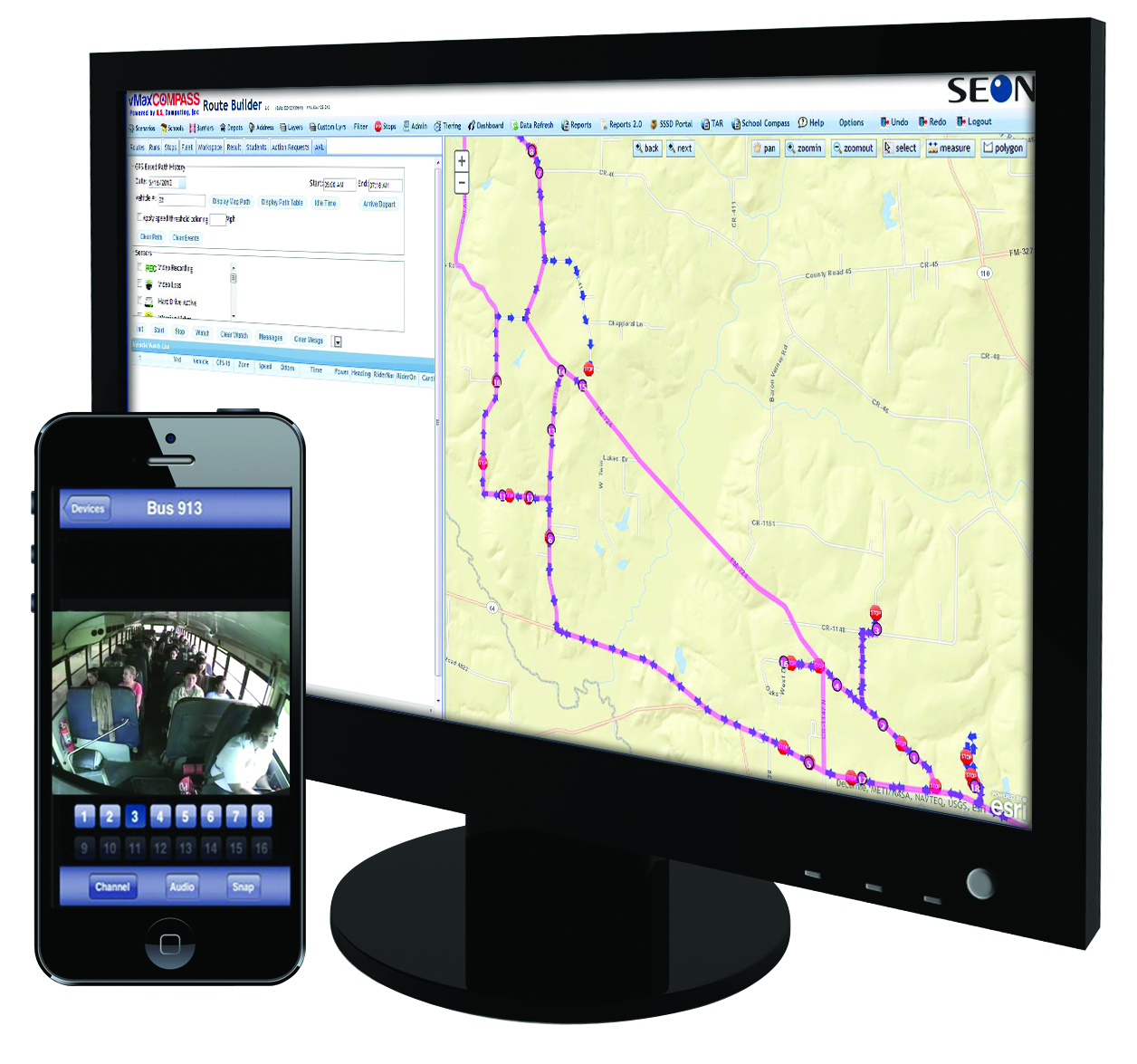
With the development and increased affordability of Geographic Information System (GIS) technology, transportation professionals all over the world discovered and embraced this tool for effective planning, and managing of transportation systems, that can solve complex route problems in minutes and dramatically increase efficiency. Today we asked our GIS expert, project manager Peter Klemm how GIS applications and software can help significantly optimize school bus fleet management and result in tangible savings.

Remember the days of pins and string on a paper map mounted on a wall (for some school districts this is still the situation) where you had your routes laid out and buses assigned and a whole lot of disconnected paperwork for driver assignments and directions, bus servicing and general accounting? What you didn’t have was a handle on whether the routes were efficient, if your buses were racking up more mileage than they should or if there was too much idle or deadhead time. To calculate this would take way more time than you had because of the mountain of paperwork you were buried under on a daily basis.
Now let’s move forward when transportation moved into the digital world with spreadsheets and databases. You had student records in a database and you had stop, bus, and driver information in spreadsheets. It took a very special person (that is hard to find and even harder to replace) that could take this information and visualize it as a total routing solution on a map.
Now dial it forward to the present day transportation system where GPS student tracking, digital mapping and databases are brought together in one seamless interface on a computer screen. In this world of GIS the transportation specialist can easily plan routes with “what if” scenarios, track buses and students in real-time, compare planned vs. actual routes for potential deviations and even view secured live audio and video from their vehicles over a cellular network.
All-in-One Solution
The transportation specialist logs into the system from any device that uses a browser, because today everything is stored centrally “in the cloud” (which is a really a poetic term used to describe a server farm somewhere on the other end of the connection). Her screen is filled with all sorts of intelligent stuff; forms and tabs for changing, entering and querying a multitude of databases depending on the desired outcome, an intelligent interactive geographic mapping system that graphically displays the database queries or tracks vehicles live, and even a live view into a bus where a critical incident may be occurring.
With all this intelligence available to the transportation specialist she can spend more time planning more efficient routes, handle emergency situations faster, and in the end cut transportation costs.
This ‘all-in-one’ solution for school transportation is exactly what Seon’s vMax Compass web-based transportation application has to offer. vMax Compass routing software was developed by US Computing and integrated with Seon’s fleet tracking and video technology to provide school districts with a single, complete view of their fleet operations. Built on the ESRI platform, the global leader in GIS and mapping software, vMax Compass uses standard data formats that are easily accessible and shareable across school districts, local government departments. Now on one screen vMax Compass users can plan safe, efficient routes, view the actual routes travelled on a map, follow a bus in real-time, and even tap into live video from on-board that bus. That’s the power of GIS and mapping intelligence.
Return on Investment
We shouldn’t kid ourselves, all of this technology costs money up-front, but the return on investment in terms of fuel and labor savings will be worth it. And also if it’s not in the budget to invest in all of this technology at once, we can break it down into manageable pieces.
Simple routing
Wouldn’t it be wonderful to take all of your stop locations and put them into a mixing bowl, then add your fleet, schools and depots, turn on the mixer and produce a complete set of efficient routes that applies the right equipment to the stop requirements, uses the least number of vehicles, obeys all of the curb-side pickup requirements and adheres to the bell schedules. This is essentially what adding GIS to the mix does. Days, possibly weeks, of planning are reduced to hours. This frees up the department to pursue other things like producing “what if” scenarios or plan next year’s routing without disturbing the management of today’s routes. With all of this extra time the department can be more proactive in their endeavors vs. reactive which is beneficial to everyone, including their customers – the public. These advantages produces a reduction in driver time and the use of fewer vehicles directly translating into tangible savings.
GPS Tracking
The computerized routing system has the ability already built in to connect to tracking systems installed on the fleet vehicles. So it is just a matter of installing the equipment on the vehicles and configuring the routing to be able receive, digest, and display the GPS-enabled signals. This would track the time, location, direction, and speed of the vehicle in 20 – 30 second intervals. Depending on the equipment and sensors installed the information displayed could also include stop-arm extensions, signal lights, door openings and even video recording status. Having this information overlaid with your route plans on a map, you can instantly see route deviations and address them in a more timely fashion. Also having the ability to view this information with only a few clicks of the mouse you can address parental concerns as they occur rather than spending your valuable time doing detective work, again, saving time and money.
Student Tracking and Viewing
With all the money you save with automated routing and vehicle tracking you can now afford to bolster your safety efforts with regard to your drivers and students. If a bus breaks down, or the unthinkable happens, you have virtual eyes on the situation immediately. You can contact only parents of actual riders vs. going through the whole list of ‘likely’ riders. You will know exactly where the incident occurred rather than having to rely on radio contact and emergency services to supply you with this information third-hand. You cannot put a price on having the ability to know where your bus is and who is actually on the bus at any given moment in time.
Peter Klemm
Project Manager | Seon
Peter.Klemm@seon.com

